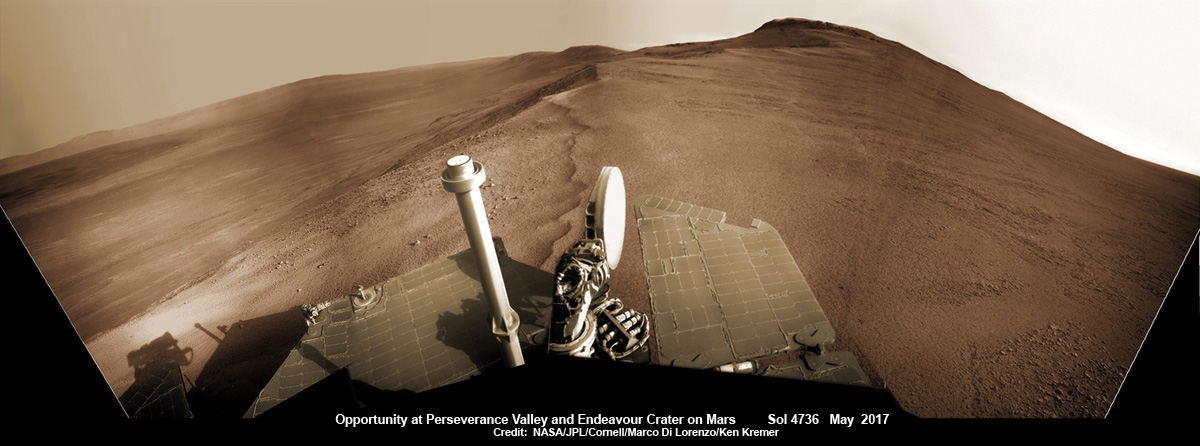Could this be the end of the Opportunity rover? There’s been no signal from the rover since last summer, when a massive global dust storm descended on it. But even though the craft has been silent and unreachable for six-and-a-half months, NASA hasn’t given up.
When Opportunity landed at Meridiani Planum on Mars in January 2004, it’s planned mission length was only 90 days. Since that day, which seems so long ago now, 15 years have passed, and over one billion people have been born on Earth. Six months ago, the rover stopped working, maybe for good. So by every measure, Opportunity has been a stunning success.
The Final Signal?
Last June Opportunity sent its last signal, a downlink of its vital statistics and not much else. It was the rover’s last communique, relayed to Earth as a massive global dust storm bore down on it. The storm was the largest one the rover had faced in its time on Mars; about 41 million square kilometers (15.8 million square miles) at the time, large enough to cover Russia and North America.
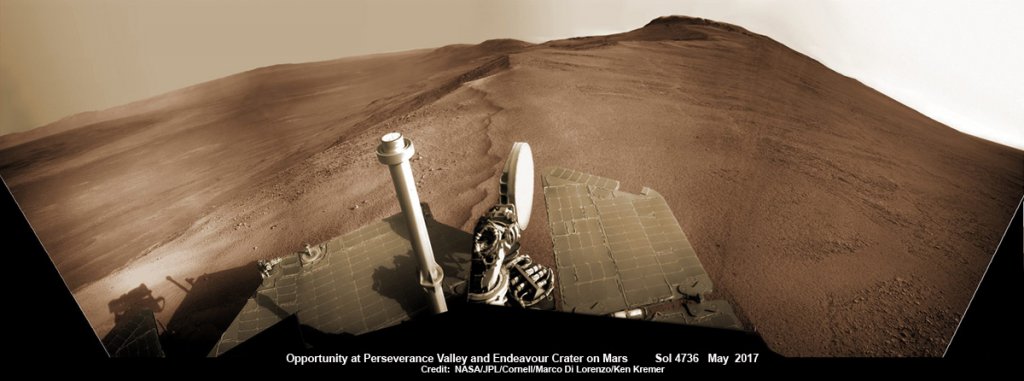
Opportunity is now stationary about halfway down Perseverance Valley in the Endeavour Crater on Mars. Its descent down the valley was going to be a historic journey. The valley is marked by channels that may have been carved by ice, water, or wind, and it would’ve been the first time we’ve gotten a close look at these channels. Sadly, the rover may never complete that journey.
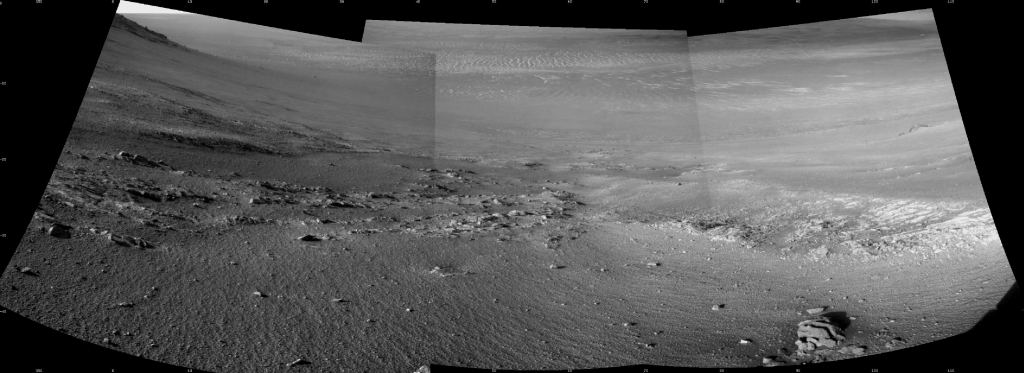
NASA/JPL-Caltech
The massive dust storm blocked out the sunlight necessary for Opportunity’s continued function, and the rover went into hibernation. NASA was hopeful that as the dust storm cleared, the panels would function again and the rover would resume working, like it had in the past. It took about 6 weeks for the dust storm to peak, and then begin to fade. But as sunlight again reached the Martian surface, Opportunity still wasn’t responding to any signals.
But NASA still didn’t lose hope.

NASA also thought that the rover’s solar panels might be covered with dust from the storm. They keep a close eye on the weather on Mars, and they hoped the changing seasons might provide some relief. It’s actually still dust storm season there, and they hoped that another storm might come along and solve the problem.
If that sounds counter-intuitive, it’s not.
A storm of the right strength would clear the panels of dust, without delivering anymore dust. Then the panels would be clear and the rover could function again. But that didn’t happen either.
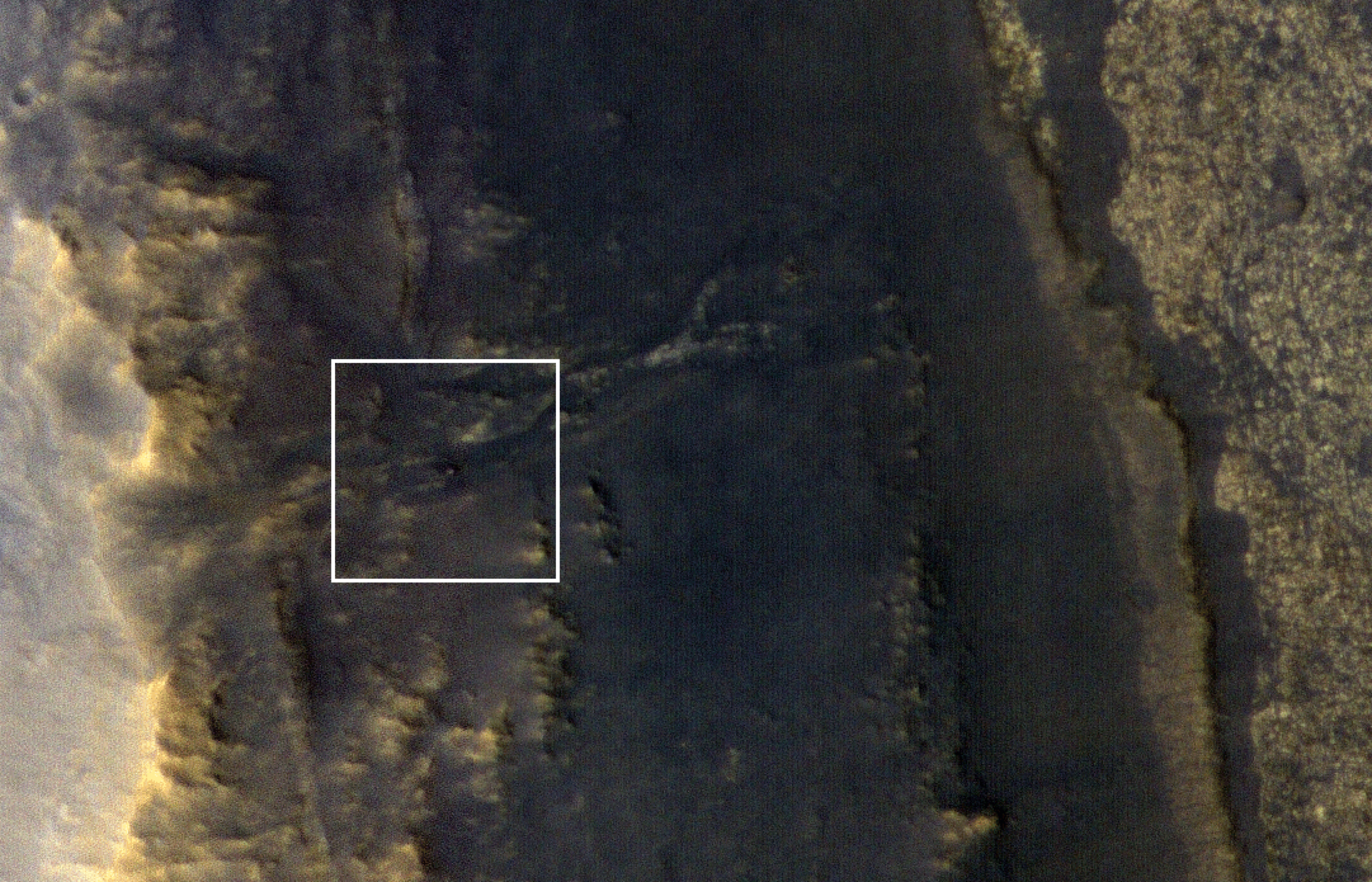
NASA/JPL-Caltech/Univ. of Arizona
Stuck at 45.16 Kilometers
As of now, the rover’s odometer is stuck at 45.16 km, which is still a remarkable achievement any way you look at it. But there’s still hope.
NASA is still trying to communicate with Opportunity. They’re relying on the power of the Deep Space Network (DSN) to do so. The DSN is a trio of powerful radio antenna facilities around the globe that allows distant spacecraft to communicate with Earth. In Opportunity’s case, it communicates with an orbiter, which then relays signals to Earth using the DSN.
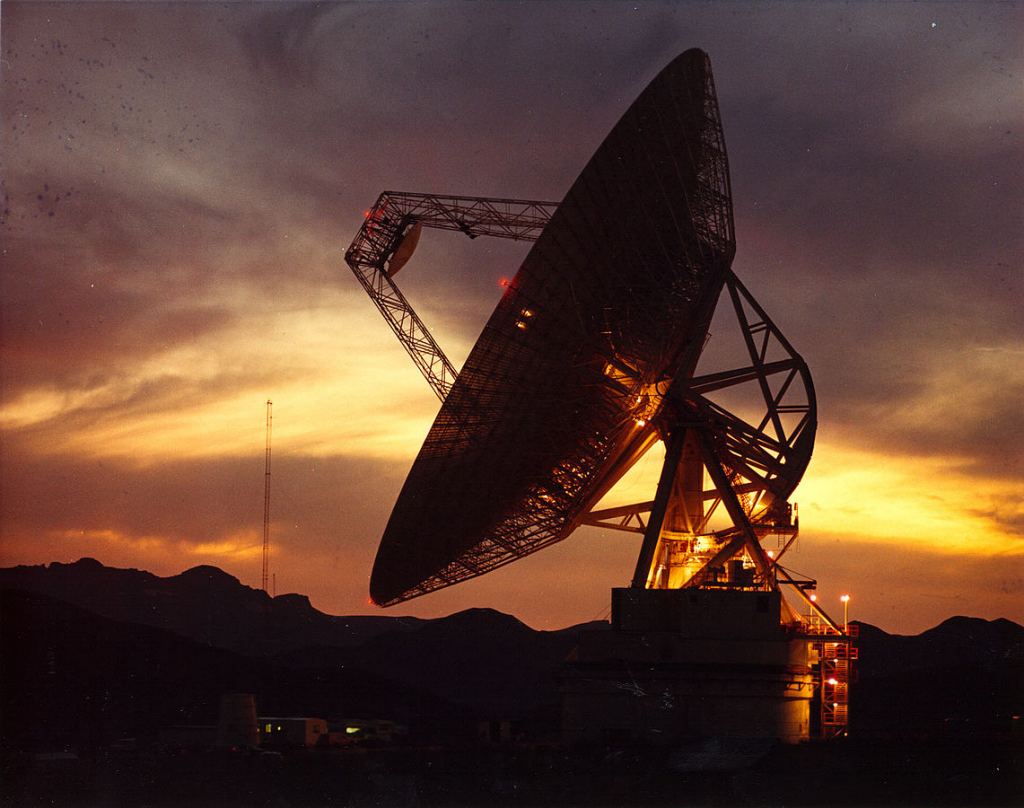
NASA is conducting what they call “sweep and beeps” with the DSN. They scan the X-band spectrum of radio frequencies that Opportunity uses to try and find any signal from Opportunity and then lock onto it. Then they can giver the rover a little electronic nudge to get it to respond. But so far, that hasn’t worked.
They’re also listening intently with the DSN to every radio signal coming from Mars. Then radio science specialists comb through that data looking for any stray signal the Opportunity may have sent. So far, nothing.
It’s maddening that we can see Opportunity from above with the MRO (Mars Reconnaissance Orbiter), but we can’t see clearly enough to find the problem. It may be dust, or it may be something else. It may be that a critical component has failed, and that’s it. We’ll probably never really know for sure.
Winter is Coming
Time is of the essence now. Fall is coming, and after that, winter. Once winter comes, a deep freeze will come with it, with Martian temperatures falling to as low as -96 degrees Celsius (-140 degrees Fahrenheit). These low temperatures won’t arrive until next October, which seems a long way off. But they’re ominous, because NASA thinks they contributed to the loss of the Spirit rover in 2010. Winter’s frigid temperatures could be the final blow for Opportunity.
NASA’s not known for giving up, and the MER (Mars Exploration Rovers) team exemplifies that spirit. But at some point, they will have to announce the end of Opportunity’s mission.
It’ll be sad when that happens. But when all is said and done, everyone involved with Opportunity will have plenty to be proud of with what they’ve accomplished. And the rest of us will have to tip our hats to them.
Sources:
- The Planetary Society: The Mars Exploration Rovers Update: Opportunity Still Silent, Team Still Hopeful
- NASA Mars Exploration Rovers
- NASA: Opportunity Views Ground Texture in ‘Perseverance Valley’
- NASA: From Mars Rover: Panorama Above ‘Perseverance Valley’
- NASA Press Release: Opportunity Hunkers Down During Dust Storm

